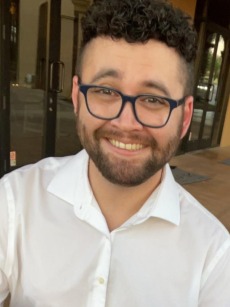
Lincoln Bain is a Ph.D. candidate in the Second Language Acquisition and Teaching (SLAT) program. Lincoln graduated from Arizona State University with a Bachelor of Arts in Spanish Literature and Culture with an emphasis on Latin American studies in 2016. During his B.A., he spent a semester abroad in Buenos Aires, Argentina. He then pursued his Master in the Arts of Teaching Spanish Education from Northern Arizona University, graduating with distinction in 2018. After his Masters's program, Lincoln went on to teach Spanish at the secondary level before continuing his education.
Lincoln's interests include game-enhanced and game-based learning, digital identity, multimodality, and second language acquisition.

